Food & Beverage brands have always been tastemakers when it comes to IRL loyalty programs. According to Yotpo’s recent consumer loyalty survey, 76.2% of U.S. shoppers said they would be most likely to participate in a loyalty program offered by a Food & Beverage brand. Over 67% of UK shoppers and 77.9% of Aussies also want to join. But, as punch cards move online, how are D2C brands in the space rising to the occasion? We asked Cure’s Senior Marketing Manager Hannah Bender and Art of Tea’s Channel Marketing Manager Devika Kelly about how their brands are navigating loyalty today.
Cure, founded in 2019 by Lauren Picasso, is a plant-based, science-backed solution to maximize shoppers’ hydration.
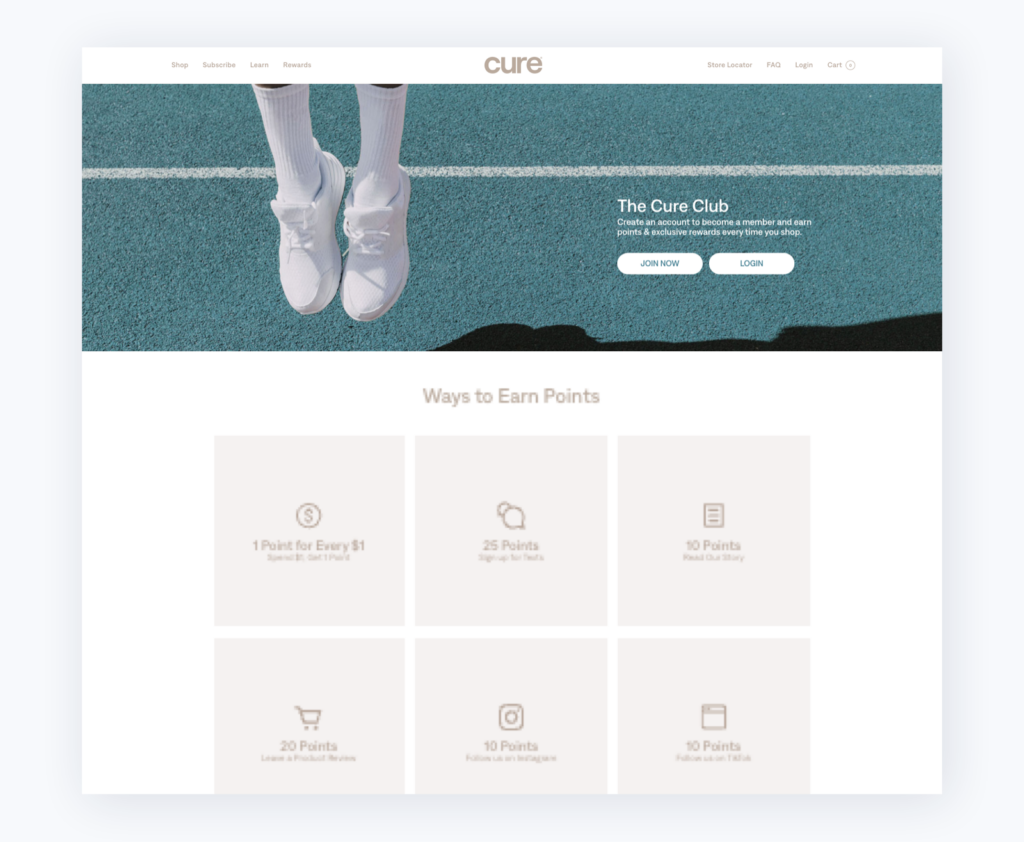
Art of Tea, started by Steve Schwartz in 2004, is a leading purveyor of organic and specialty teas.
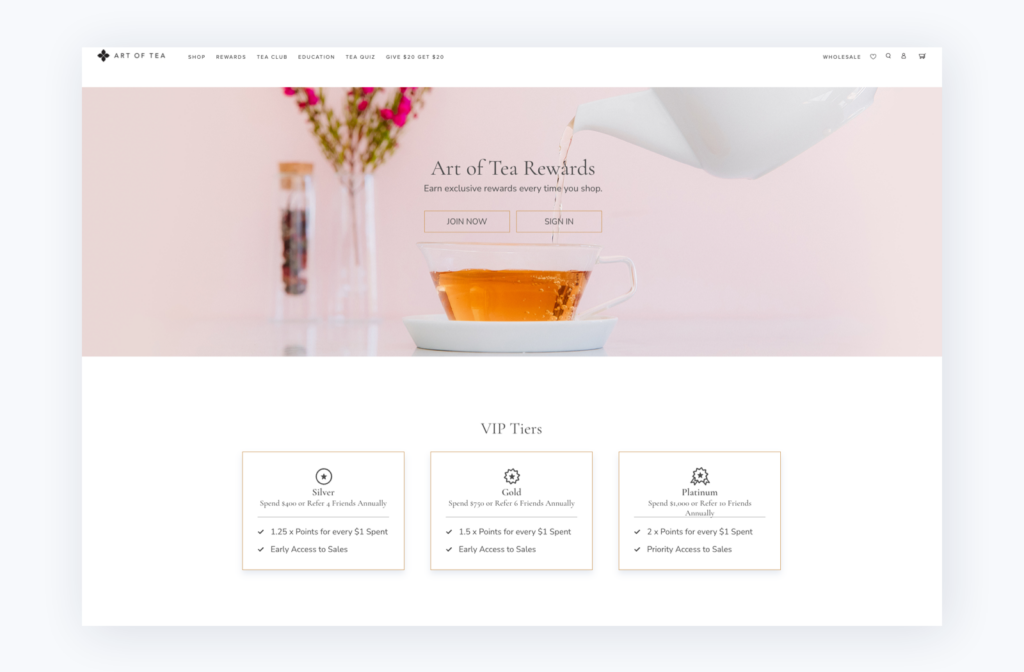
Q: Physical punch card campaigns have been a longstanding reward method for Food & Beverage brands selling in stores. As brands with D2C channels, when did you decide it was the right time to implement a loyalty program?
Devika: Before the pandemic, wholesale was the biggest chunk of our business. And then when COVID hit, almost all of our wholesale clients were forced to temporarily or permanently shut down. All of a sudden, our business was completely transformed, and it was scary.
We really had to pivot and start focusing on our eCommerce business. It was all so unprecedented and no one knew if things would ever really go back to their pre-pandemic states, so we knew we had to make some fundamental changes to how we operated as a company. We actually ended up seeing that our D2C business boomed. I think it might have been something that was providing comfort.
We know that people were shopping online a little bit more during the pandemic, people were trying to prioritize health and wellness. And in spite of all the uncertainty, our D2C customers allowed us to get through the pandemic and really uncover all of these new possibilities for ways to grow the business. Since then, we have had a bigger focus on D2C, and we really just wanted to reward those customers that gave us that life to get through.
Hannah: It’s interesting to hear how Art of Tea thinks about loyalty as a business that has been around longer than Cure. Lauren Picasso founded the business in 2019, but ultimately our business grew up in the pandemic, where we saw consumers prioritizing their health more than ever. Cure started thinking about a loyalty program last summer as we grew our community of loyal customers.
I actually was brought into the company to help figure out how a loyalty program could work for us, having seen how amazing brands like Sephora and Bloomingdale’s do it. We started researching and asking questions: Let’s see how they’re structured. Let’s see how effective they’ve been for other brands, especially early-stage startups. Let’s learn about how best-in-class companies are doing them.
A big part of the process was doing interviews with technology partners and trying to find the right one. Interviewing with Yotpo was a big step. With everything we learned, loyalty was a no-brainer for us as a D2C business. Like Art of Tea, currently half our business is direct-to-consumer and half is retail distribution. And with that split, it made sense for us to launch a loyalty program.
Q: Consumers were looking for healthier ways to live their lives during the pandemic, which is something you both touched on. How did you get shoppers to choose your brand to achieve that goal with loyalty?
Hannah: Hydration is definitely having a moment. There are definitely other competitors in the space.
And so for us, how do we differentiate? It’s really about education and communication. We articulate how we’re different from other brands, what we offer, and why Cure is more advantageous and better for your body than other offerings out there. Education is hard. You have to get in front of someone before you have the opportunity to really educate them. We have loved the loyalty program as a channel to message not only our existing customers but also new customers about why we have so many amazing loyal customers who really consume Cure on a daily basis.
It’s really just about communicating our advantages and the differences in our formula.
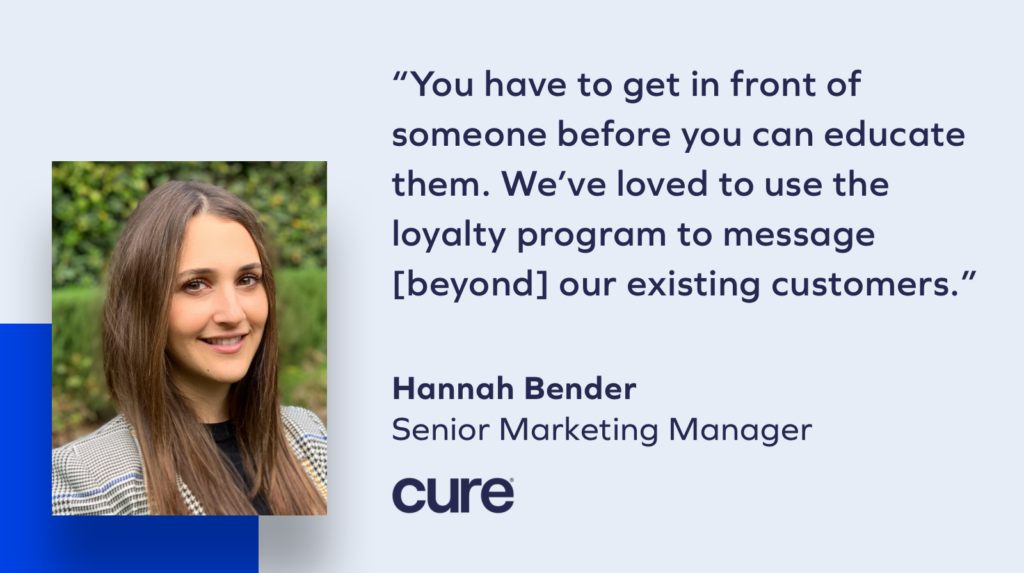
Devika: Education is such an important part of any marketing strategy. A lot of tea companies will use microplastics or staples in their teabags. Instead, we use biodegradable tea bags. Other companies use tea dustings, we use whole ingredients in our blends.
So for us, when we can get that customer in by sharing what makes us different and what sets us apart when they can try our product and really experience that quality — we really want to keep them coming back. And that’s where loyalty has been amazing for us in giving customers amazing added value. The more you’re shopping, the more you’re buying Art of Tea, the deeper rewards you get.
A lot of brands these days really want to get that customer in. You see a lot of amazing first-time-only offers, and then that’s kind of it. Loyalty is just this amazing way where if you do shop frequently if you love this product, you drink it daily, you can’t live without it, you’re not being excluded from really great offers. In fact, you’re actually getting better, deeper, and more exclusive ones through loyalty. Adding loyalty to Art of Tea has been amazing. I love it. I love being able to re-engage with our customers through it.
Q: What did you want shoppers to get out of your loyalty program experience?
Devika: I wanted to give them a really amazing value they can’t get elsewhere. I wanted Art of Tea Rewards to be this exclusive community where you’re getting access to things that you literally can’t find anywhere else, like exclusive VIP-tier specific offers and engagements.
Learning what incentivizes our customers has been hugely valuable as well so we can see what performs well in our loyalty program and continue to reward our customers in that way.
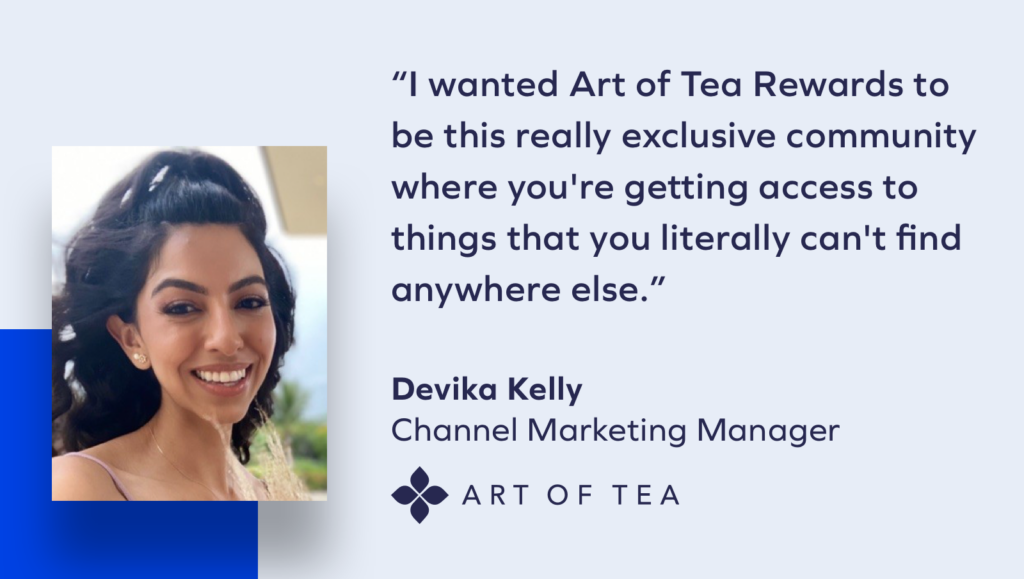
Hannah: That’s definitely also what’s been a goal for Cure. It’s really been two-pronged for us. Growing brand awareness is so important as an early-stage startup, so you want to always be finding new ways to get in front of customers.
Ultimately, what we’ve seen is when people sample the product, they really love it — the taste and the efficacy. Loyalty has really kind of been a great opportunity for us to reach shoppers, to get them to try Cure, and then to draw them in for the rest of their lives.
And then, our second goal was to build an even more excited community. The Cure Club is where customers are really able to engage with us, to have what feels more like a relationship than just a transaction. So that really was a goal: How do we reward our customers and build that relationship so that it’s not this transactional experience?
Q: What challenges have you overcome with a loyalty program as a Food & Beverage brand?
Hannah: The biggest one for us has been increasing email collection. Sometimes people will purchase on your website, but they don’t always have to put in their email. The Cure Club has gotten people a lot more excited to actually make an account, engage with our brand, and build a points balance. They start seeing that value that Devika mentioned.
When customers really become loyal, they want to care about the brand and they want the brand to care about them. They want to receive emails and texts, follow the brand on Instagram, and write supportive reviews. So, when you’re offering those rewards for those behaviors, that’s where you build the relationships and that’s when people are excited to be more than just a customer.
We’ve also moved away from a traditional sales and promo strategy with loyalty. We’ve now built our entire annual promotional strategy to focus on loyalty and to find unique and creative ways to reward not only our existing customers but also potential new customers. It’s been exciting to see how this has impacted our business and how it’s grown our loyalty program month over month.
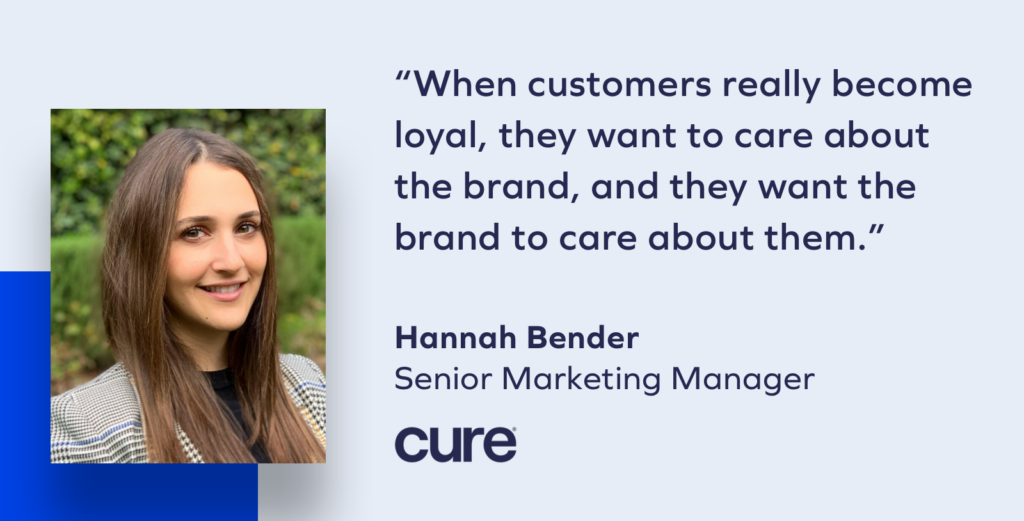
Devika: We’ve been talking about doing something similar as well. We really want to reward the customers that are engaged with us. I love that Cure is doing that, offering the big, exciting sale to the people who really do engage with our brands.
Q: If you could ask the other brand a question about loyalty or their experience with it, what would you ask?
Devika: I would love to know: What are Cure’s biggest goals? Moving forward, what’s the dream that you’re hoping to achieve, in the short-term and in the long-term?
Hannah: For us short term, our goal is to execute a different kind of promo every month and see how they do with varying goals. With the loyalty promotion we just did in March, the goal was really to get more account sign-ups. We saw a 4x on account creation compared to our averages. This month, we’re going to be running a social promotion where we’re going to give extra points if you do a social action through our Loyalty program. We’re very interested to see how that improves some of our social growth goals.
Long-term, we want every D2C customer to be in our loyalty program. There is no downside, right? That’s the end goal.
What have been some of your highlights, your top loyalty moments?
Devika: Since we implemented the program, we’ve gotten great feedback from our customers. A really big moment that worked well for us was the ability to stack your Loyalty Rewards with a sale, which our Yotpo CSM helped us do. That was really exciting for our community because up until then, you had to choose one or the other, which frustrated shoppers.
We also started with just discounts, and then we added product redemptions well. That has been really great. We’re going to be playing around this summer and changing up those product offerings so that they’re seasonal. We might offer an ice tea maker or an ice tea tumbler.
To learn more about Cure and Art of Tea, visit their websites and peruse their loyalty programs. We also hope you stay tuned for the next installment of our Brand2Brand series.













